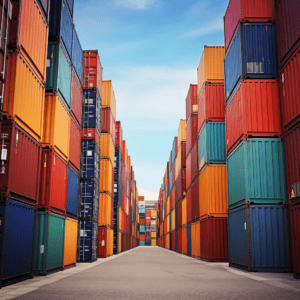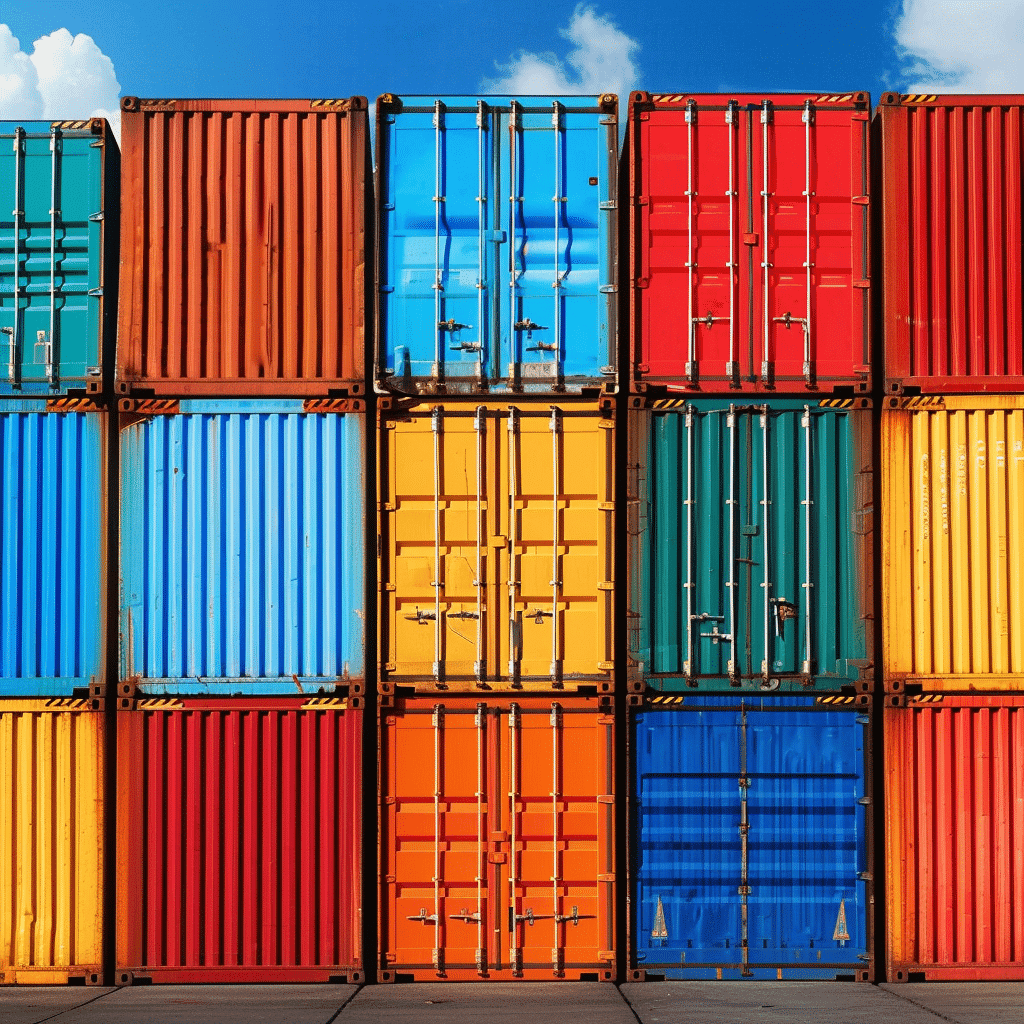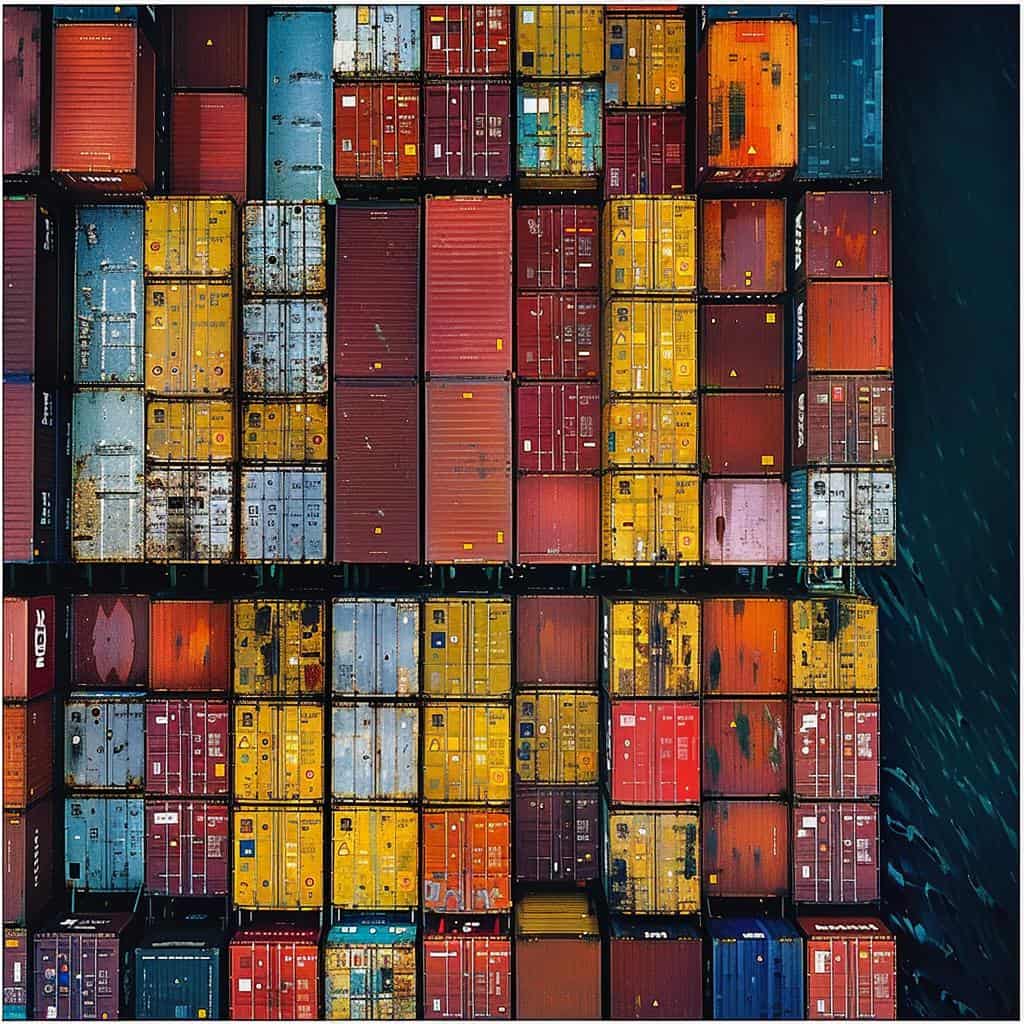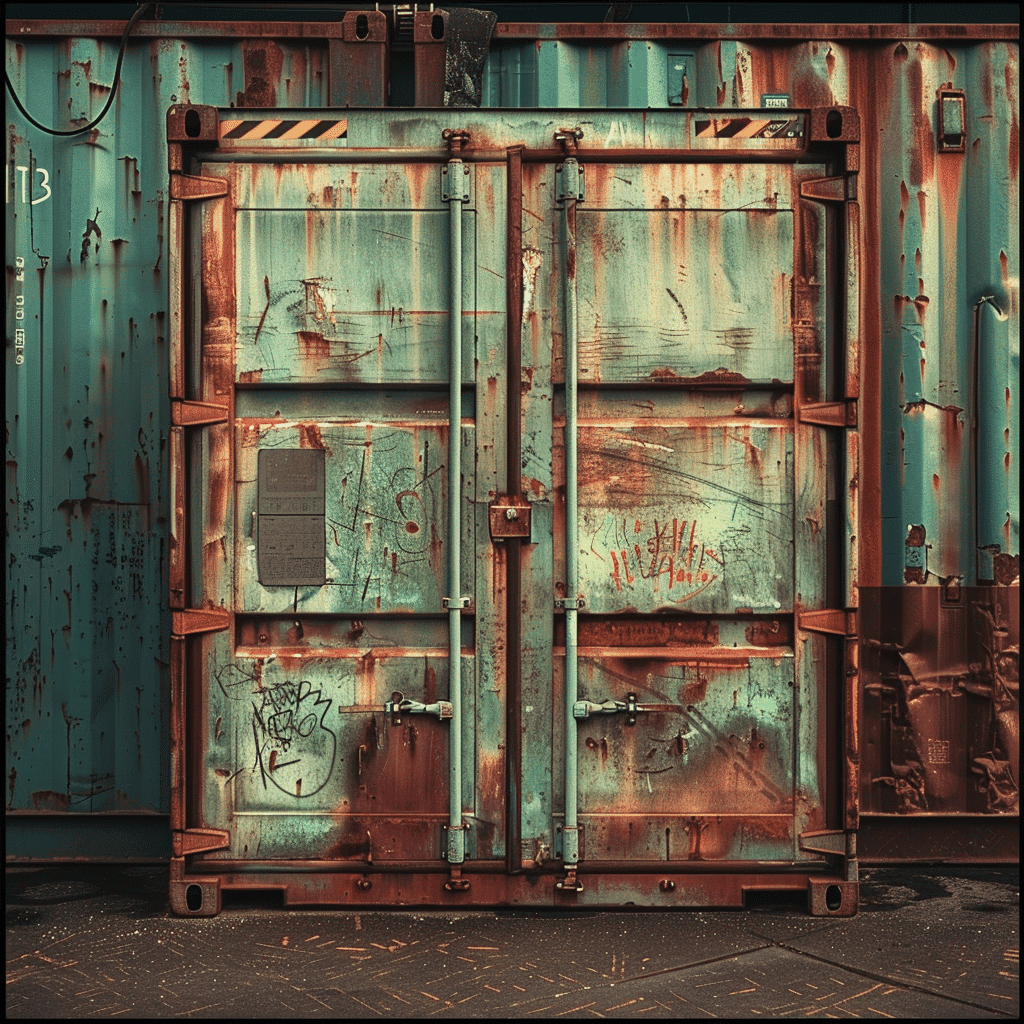In our modern, fast-paced world, the need for additional space has never been greater. Many homeowners and business owners turn to storage containers as a cost-effective and convenient solution. But how much does a storage container cost? In this article, we’ll delve into the many factors that can influence the container price, and provide you with a comprehensive overview of what to expect.
Understanding the Basics of Storage Containers
Storage containers, also known as shipping containers, are large, steel boxes traditionally used for shipping goods. They are versatile and secure, making them increasingly popular for various purposes.
These containers are not limited to just shipping cargo. They can be converted into homes, offices, or shops, providing a cost-effective and sustainable alternative to traditional construction. With their sturdy construction and ability to withstand harsh weather conditions, storage container conversions have become a trend in the architecture and design world.
Furthermore, storage containers are widely used as temporary or permanent storage space for goods and materials. Many businesses and individuals find them convenient for storing excess inventory, equipment, or personal belongings. They provide a secure and easily accessible solution for storing items of various sizes.
What is a Storage Container?
A storage container, also known as a shipping container, is a large, steel box traditionally used for shipping goods. Versatile and secure, they are increasingly used for various purposes, from shipping cargo to being converted into homes, offices, or shops, and as storage space for goods and material.
These portable storage containers are typically made of high-quality steel, which ensures durability and protection of the contents. They are designed to be stackable, allowing for efficient use of space during transportation or storage. Additionally, storage containers are equipped with weatherproof seals to keep the contents safe from water, dust, and pests.
Available in different sizes, storage containers can accommodate a wide range of goods. From small items to large machinery, these containers provide a flexible storage solution for businesses and individuals alike.
Different Types of Storage Containers
Storage containers come in a variety of types to cater to different needs and requirements. Understanding the different types can help you choose the right size storage container for your specific purpose.
The most common type of storage container is the standard dry container. These containers are ideal for general purposes and can accommodate various types of goods. They are equipped with double doors on one end, allowing for easy loading and unloading.
In addition to standard dry containers, there are also refrigerated containers, commonly known as reefers. These containers have built-in cooling systems, making them suitable for transporting goods that require temperature control. They are often used for shipping perishable items such as food, pharmaceuticals, and chemicals.
Another type of storage container is the open top container. As the name suggests, these containers have an open top, making it easier to load and unload bulky or oversized items. They are commonly used in industries such as construction, where large equipment or materials need to be transported.
For the transportation of liquids, tank containers are the preferred choice. These containers have cylindrical shapes and are specifically designed to transport liquids safely. They are commonly used for shipping chemicals, oils, and other hazardous materials.
Regardless of the type of storage container you choose, it is important to consider your specific needs and requirements. Whether you are shipping goods, converting a container into a living space, or storing personal belongings, storage containers offer a practical and versatile solution.
Factors Influencing the Cost of Storage Containers
Storage containers are a popular solution for individuals and businesses looking for additional space to store their belongings or merchandise. When considering the cost of storage containers, there are several factors to consider and take into account.
Location-Specific Pricing and Trends
New England’s storage container landscape is influenced by various regional dynamics:
- Seasonal Demand: Seasons shape demand. Summer, with its flurry of moves and construction projects, can see a spike in demand, nudging prices upward.
- Geographical Factors: Proximity to urban centers or ports can influence prices. For instance, containers in port cities might be more affordable due to reduced transportation costs.
- Local Competition: With multiple providers vying for customers, competition can lead to attractive deals and promotions, ensuring customers get bang for their buck.
Size and Capacity of the Container
The size and capacity of a storage container significantly influence how much is a storage container and its cost. Generally, larger containers cost more than smaller ones. The most common sizes (in length) are 20ft and 40ft, but there are also containers as small as 10ft or as large as 45ft. The size of the container determines how much it can hold, and therefore, larger containers offer more storage space, resulting in a higher price.
It’s important to carefully see storage container prices and assess your storage needs to determine the appropriate size of the container. If you require a larger space, you should be prepared to pay a higher price.
Material and Durability
Containers designed with high-quality materials usually fetch a higher price due to their increased lifespan and durability. Most containers are made of corrugated weathering steel, ensuring they can withstand harsh weather conditions and heavy loads. This type of steel is known for its strength and resistance to corrosion, making it an ideal choice for storage containers.
Investing in a container made of high-quality materials can be beneficial in the long run, as it reduces the risk of damage and the need for frequent repairs or replacements. Although containers made with lower-quality materials may be more affordable initially, they may not offer the same level of durability and may require more maintenance over time.
New vs. Used Containers
Whether a container is new or used also affects its pricing. New containers tend to be pricier, but they guarantee far fewer maintenance issues. They are in pristine condition and have not been exposed to the wear and tear that used containers may have experienced. New containers also often come with additional features and customization options.
On the other hand, used containers are an affordable alternative, but their condition and remaining lifespan can vary greatly. It’s essential to carefully inspect a used container before purchasing to ensure it meets your requirements. Factors such as previous use, maintenance history, and overall condition should be taken into consideration.
Ultimately, the decision between new and used containers depends on your budget, storage needs, and preferences. While new containers offer peace of mind and a longer lifespan, used containers can provide a cost-effective solution if you are willing to accept some wear and tear.

Average Cost of Buying a Storage Container
When it comes to finding the perfect storage solution, buying a storage container can be a great option. Not only do they provide a secure and convenient space to store your belongings, but they also come in various sizes to suit your specific needs. Let’s take a closer look at the average cost of buying a storage container, categorized by size.
Cost of Small Storage Containers
If you’re looking for a compact and portable storage option, small storage containers may be the ideal choice for you. These containers, typically around 10ft long, offer enough space to store your belongings without taking up too much room.
The cost of small storage containers can vary depending on several factors. The condition of the container and the quality of the materials used in its construction play a significant role in determining the container costs and price. On average, you can expect to pay anywhere between $2,000 and $3,000 for a small storage container.
Cost of Medium Storage Containers
For those who require a bit more space, medium-sized storage containers are a popular option. These containers, usually around 20ft long, provide ample room to store larger items or a greater quantity of belongings.
Similar to small storage containers, the cost of medium-sized storage units can vary based on factors such as material quality and condition. On average, you can expect to spend between $3,000 and $5,000 for a medium storage container.
Cost of Large Storage Containers
When it comes to storage containers, bigger may be better for some individuals or businesses. Large storage containers, such as the 40ft units, offer a significant amount of space to accommodate a wide range of storage needs.
Due to the increased size and materials required to construct these larger units, the cost of large storage containers tends to be higher. On average, you can expect to pay between $5,000 per new storage container and $8,000 or more for a large storage container.
It’s important to note that these cost ranges are just averages, and prices may vary depending on your location, the specific features you require, and the seller you choose. Additionally, it’s always a good idea to consider additional expenses such as delivery fees, and setup fees when budgeting for your storage container purchase.
Whether you opt for a small, medium, or large storage container, investing in one can provide you with a reliable and secure storage solution for years to come. Consider your storage needs, budget, and the options available in your area to make an informed decision that suits your requirements.
Costs Associated with Renting a Storage Container
When it comes to finding a suitable solution for storing your belongings, renting full storage unit or container is another viable option. Not only does it provide a secure and convenient space for your items, but it also offers flexibility in terms of rental duration and cost.
Short-term Rental Costs
Short-term rentals are ideal for those who only need storage for a limited period of time. Whether you are in the process of moving, renovating your home, or decluttering, a short-term rental can provide the temporary space you require. The cost of short-term rentals typically varies depending on the size of the container and the duration of the rental.
For smaller storage containers, which are perfect for storing a few boxes or seasonal items, the monthly rental cost can range between $100 and $200. On the other hand, larger containers, which can accommodate furniture or the contents of an entire room, may cost between $300 and $500 per month.
It is important to note that these prices are approximate and can vary depending on factors such as location, availability, and additional services provided by the storage facility. Some facilities and companies may offer discounts or promotional rates for short-term rentals, so it is worth exploring different options before making a decision.
Long-term Rental Costs
If you require storage for a longer period, such as several months or even years, opting for a long-term rental can be a more cost-effective choice. Long-term rentals often come with reduced monthly rates, allowing you to save money in the long run.
For example, a small storage container that may have cost $200 per month for a short-term rental could be available for as low as $75 to $100 per month for a long-term rental. Similarly, larger containers that were previously priced at $500 per month could drop to around $150 to $200 per month for a long-term commitment.
While the monthly cost of long-term rentals may be lower, it is important to consider the overall cost over the extended rental period. It is also worth noting that some storage facilities may require a minimum commitment for long-term rentals, such as a six-month or one-year lease agreement.
Additionally, it is essential to factor in any additional fees or charges that may apply. These can include insurance coverage for your stored items, security deposit requirements, and administration fees. It is advisable to inquire about these details when discussing rental terms with the storage facility.
In conclusion, whether you opt for a short-term or long-term rental, renting a storage container provides a flexible and convenient solution for your storage needs. By understanding the costs associated with renting a storage container, you can make an informed decision that suits your budget and requirements.
Additional Costs to Consider
Delivery and Installation Costs
Transporting and setting up the container can also add to the final cost. Depending on your location, transportation costs and the difficulty of installation, these costs can range from a few hundred to several thousand dollars.
Why Buy and Rent from Valtran
Valtran, a trusted name in New England, offers more than just storage containers. Our commitment to quality and customer satisfaction sets us apart:
- Delivery and Pickup: Valtran prides itself on its prompt delivery services. While some companies might levy charges for local delivery, we ensure timely deliveries, within 24 business hours, keeping customer convenience at the forefront.
- Maintenance: With Valtran, customers can be assured of the quality. Whether you’re opting for a brand-new container or a used one, we ensure that each container meets the highest quality standards.
Frequently Asked Questions
- What sets Valtran apart? With over 20 years of experience, we stand out for our commitment to quality, customer-centric approach, and competitive pricing. our extensive inventory and prompt services make them a preferred choice in New England.
- Is it more cost-effective to rent or buy with Valtran? Valtran offers both rental and purchase options. While renting might be ideal for short-term needs, purchasing could be a long-term investment, especially for businesses.
Maintenance and Repair Costs
Finally, the costs associated with ongoing maintenance and potential repairs should also be taken into account. These could include repainting, fixing leaks, and addressing other wear and tear issues.
In conclusion, the cost of a storage container can vary greatly depending on numerous factors. Whether you choose to buy or rent a storage container, understanding these factors will help you make the best decision for your needs and budget.


